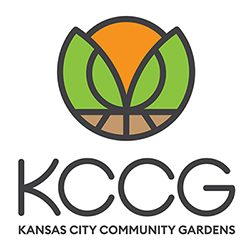Ben Sharda is KCCG’s Executive Director and he has led KCCG for more than 30 years. His practical approach to gardening has played a key role in KCCG’s success. This month, Ben offers tips on fertilizing your plants.
Ben’s Tips – Fertilizing Your Plants
Gardeners often come in to our office confused about what and how to feed their plants. Fertilizing is not an exact science and it will take a little bit of trial and error to figure out the best way to feed the plants in your garden, but here are some tips to get you started.
The fertilizer packaging will tell you the amount of each of the plant nutrients that it contains. The N-P-K numbers will tell you how much Nitrogen, Phosphorus and Potassium that fertilizer will give your plants. The amount of Nitrogen in the fertilizer is particularly important. Nitrogen promotes green leafy growth. This is especially important at the beginning of a plant’s life when it needs to grow a thick stem and healthy leaves. As fruiting plants (including tomatoes, peppers, cucumbers, okra) mature, you should switch to a more balanced fertilizer as too much nitrogen will lead to a green bushy plant with not as much fruit.
Make sure to follow the application instructions written on the fertilizer package. If you give your plant too much fertilizer at one time it will “burn” the leaves. In mild cases, the leaf edges will turn brown but the plant will recover. In serious cases, the plant will turn brown and crispy and will need to be replaced. Plants that need fertilizer often have yellow leaves and stunted growth.
As a general rule, fertilize your plants 2-3 weeks after you plant and then once again 3-4 weeks later. Some plants, such as onions, garlic and corn are heavy feeders and may need fertilizing more often.
Gardeners often inquire about the difference between organic and non-organic fertilizers. All fertilizers will provide nutrients. Chemical fertilizers are quick-release, giving a fast jolt of nutrients to your plants. Organic fertilizers are slow-release and will provide nutrients to your plants over time. We often liken this to the difference between eating sugar cubes and eating an apple. Both will give you sugar, but the apple will give you natural sugar over a longer period.
Here are a few other fertilizing tips:
• Fertilizer is intended to feed your plants, it is not a soil amendment. Gardeners often purchase large quantities of KCCG’s organic chicken manure fertilizer and work it into their gardens. This fertilizer will not improve your soil.
• Do not put fertilizer at the bottom of the hole where you are going to plant. This can “burn” the plant. Instead work fertilizer into the top 1-2” in a circle around the plants.
• Liquid fertilizers can be more expensive but are great for small seedlings and smaller crops, like carrots, that are hard to work pelletized fertilizer in around.
Happy fertilizing!

